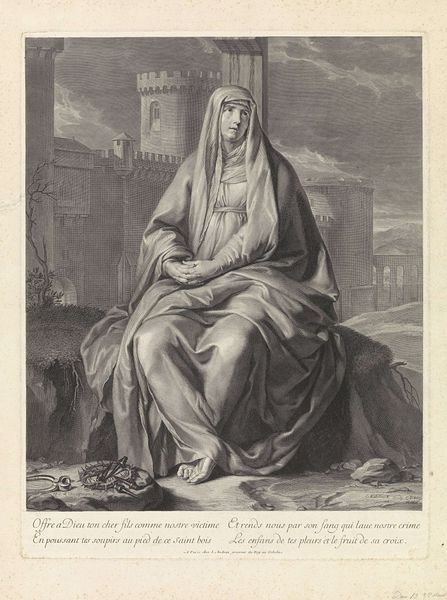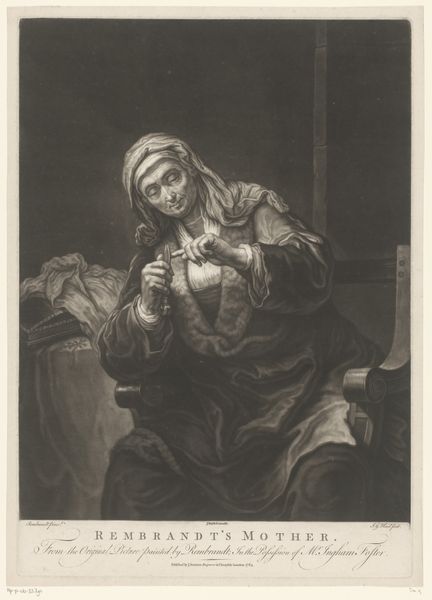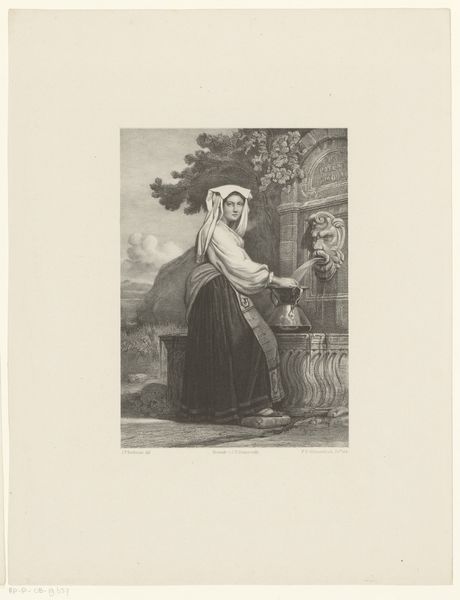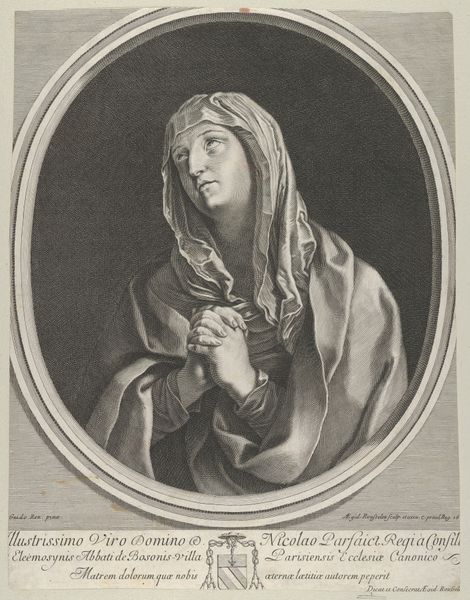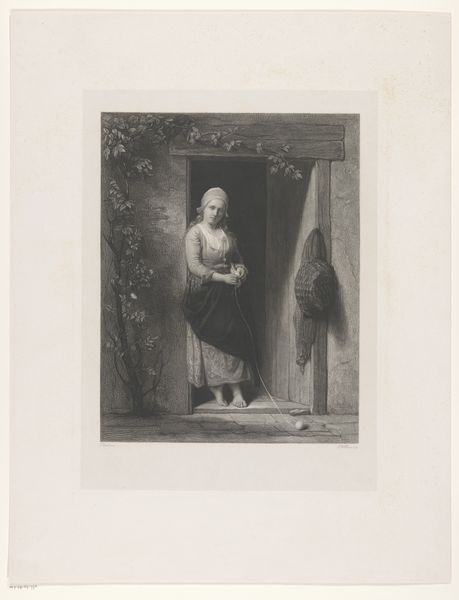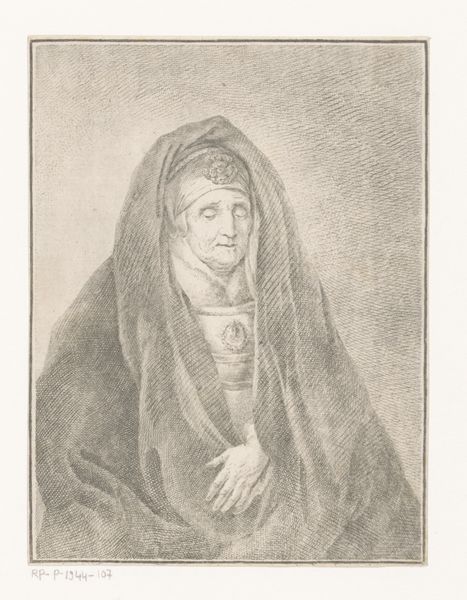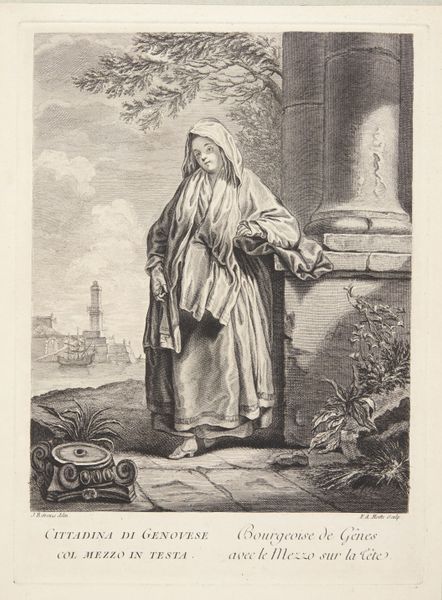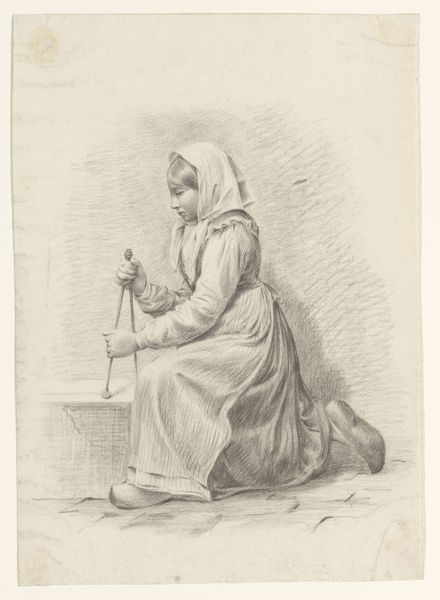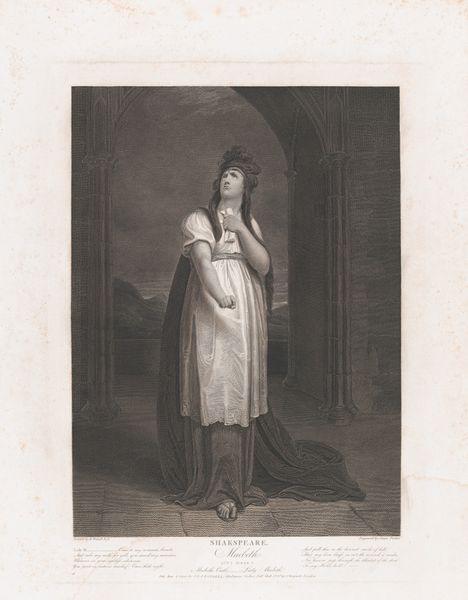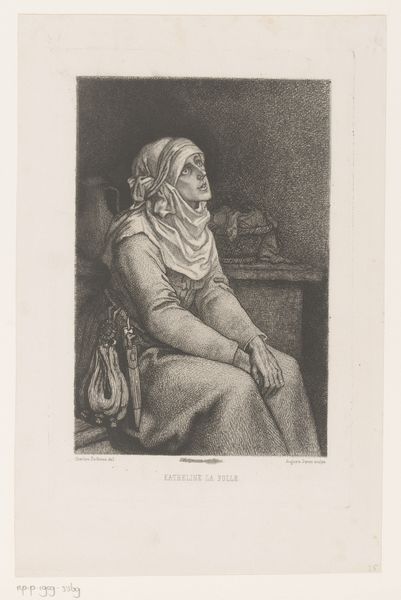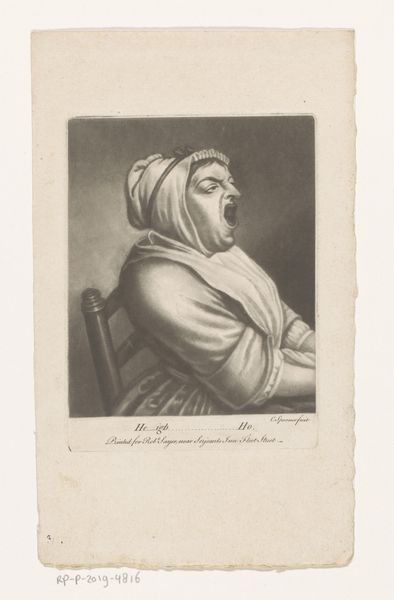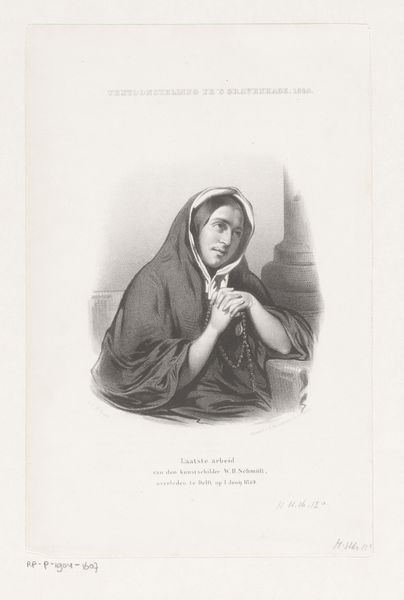
#
photo of handprinted image
#
yellowing
#
aged paper
#
light pencil work
#
yellowing background
#
photo restoration
#
expressing emotion
#
light coloured
#
strong emotion
#
yellow element
Dimensions: height 456 mm, width 356 mm
Copyright: Rijks Museum: Open Domain
Editor: So, this is "Maria aan de voet van het kruis met naast haar de doornenkroon" by Auguste Danse, created in 1863. It's a print, and the sorrow in Mary's face is palpable. The crown of thorns lying discarded beside her makes a potent statement, don't you think? What do you see in this piece beyond the immediate emotion? Curator: The means of production of prints in the 19th century are fascinating. Consider the labor involved: the engraver, the printer, and the paper makers. Each contributed to the final image we see here, a commodity ultimately intended for mass consumption. How does that understanding influence your interpretation? Editor: That's a completely different angle! It does feel more... human, knowing how many hands touched it. Does that shift the focus from religious iconography? Curator: Not necessarily *shift*, but perhaps *expand*. Religious iconography wasn’t created in a vacuum. It's tied to the economics of art production and distribution. Think about the paper itself. What would it have cost? Who could afford it? What does that tell us about the intended audience? Editor: I see… it wasn’t just about religious devotion, it was about class and accessibility too. So, even the *materials* used tell a story? Curator: Precisely! The availability of such prints, the skill needed to create them - even the chemical processes used to create the print itself point toward an industrializing society hungry for imagery, be it religious, political, or otherwise. This print represents both piety and burgeoning capitalist methods of dissemination. Editor: This is a whole new way of viewing art for me. It makes me think about the artist's role differently – not just as a creator of beauty, but someone embedded in a whole network of material production. Curator: Exactly. Art is rarely created in a vacuum. By examining the material conditions surrounding its creation and circulation, we can gain deeper insight into its meaning and function.
Comments
No comments
Be the first to comment and join the conversation on the ultimate creative platform.

